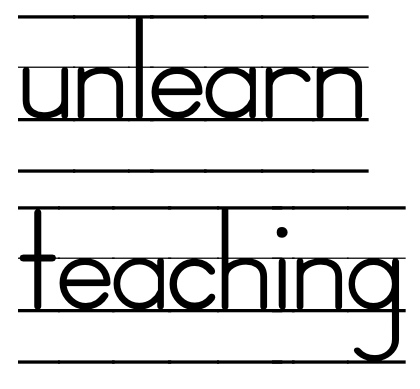Learning should not be organized around a training event. It should be the other way around.
A training should be one of the options that is available in order for learning to occur. It’s not about the training event. It’s about participation to the community.
The Curse of a Frame of Reference
In last week’s post I focused on ten questions that will help us to get serious again about learning. My intention was inverse the dynamic of teaching (outside-in) to a learning dynamic (inside-out). Unfortunately I was still reasoning within the same frame of reference that we are upholding since the Industrial Revolution: the training event.
Let’s be honest, if we are serious about learning, we will need to undo the frame of reference. Before, during or after is not the point. Back to the drawing table. Training should be organized around learning. It should be used when it is adding value to the learning cycle. Not for the sake of the training industry.
A Different Starting Point
Training is the unnatural de-contextualization of knowledge so it can fit into the context of multiple participants. That way we can model schools like a factory. People can be trained in batches and outputs can be measured. This is where we are today.
Learning has a different disposition. It is contextual in nature. It is the problem at hand, the challenge in front of you and the unresolved tension you are coping with that triggers the intention to learn. Most of all, learning is a social thing. The most important part of learning is adopting a way of seeing, a way of engaging and a way of knowing.
The only way to sense if a problem is an interesting problem or to know if a solution is an elegant solution is by participating in the practices of a field. Therefore, the question of learning is one of participation. John Seely Brown refers to this as enculturation.
Education 3.0: A Culture of Participation
John Seely Brown refers to this pedagogical shift when he talks about Education 3.0. The below table summaries his view:

His point is that a culture of learning is based on participation, creating and tinkering. Education 3.0 goes beyond providing free access to traditional course materials and educational tools and creates a participatory architecture for supporting communities of learners. in my own words: it’s embedded in the context of a social architecture; a framework of communities on top of the formal organization.
The Role of Social Media in Learning
The good news is that social media turn out to be an ideal technology for community building and participation. By allowing us to be the producers and the consumers of digital content at the same time, we create meaning and build community.
Unfortunately, this will require some more unlearning of the teaching paradigm. Let me clear about this: social learning is not the same as using social media in the classroom. Learning is social by default. In fact, technology has nothing to do with it. In this respect, social media should be considered as another classroom: a public space where you go to for learning-to-be.
Of course, social media will perform way better than ordinary classrooms in terms of building a social fabric and sometimes they are even the very platform where the learning gets triggered. But it’s always about the community and learning-to-be. Maybe a classroom will be one of those public places we turn to in order to learn. But the criteria will be different in the near future: context & connection, instead of content & collection.




Pingback: Where Social Learning is Stuck Today | Reply-MC()
Pingback: HRMblogs.com()